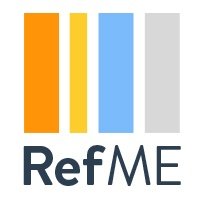Here it is, folks, the last bank holiday of the year. Well, as long as you ignore Christmas and Boxing Day. Anyway, while you all enjoy this stupid heatwave, with DIY, BBQs, or whatever, the wheels keep turning at Giz UK. So here is this week’s round-up of apps.
Contents

If you’re tired of the regular Android navigation bar, do we have the app for you. Navbar Apps is designed to change the design of your navigation bar, and put the whole thing to good use.
Navbar Apps doesn’t let you add any extra buttons to the navigation bar, which is a shame, but the design of the thing can be changed in an instant. You can change it to a different solid colour, opt for a colour that alternates from app to app, or opt for an image. There are a bunch of images pre-loaded, and you can add your own if you upgrade to the premium version (£0.99).
The design is the brunt of it, but Navbar Apps is working on adding widget-type things to the bar. At the moment the only one available is a battery life status bar that takes up X amount of space, with the X correlating to the percentage of battery you currently have. Unfortunately you can only choose between light and dark, rather than customising the colour. I feel like red or green would be a good couple of options to have. There’s also a music control widget on the way, but it’s not currently usable.
One of the things that makes Android great is all the customisation options user have. There are always limits to that, and thankfully there apps like this to help out. Naturally it won’t work with certain devices (like Samsung devices that have physical buttons for navigation), and it’s pretty basic, but it does a good job. If you’re bored of what you have, or you just want some extra options, give this a go.
You should also try:
Autoblog VR: An app delivering up a huge selection of 360-degree video content, putting you in the driving seat of some of the nicest cars the world has to offer. [Free]
N Music (beta): An ad-free music player, with a sleek Material Design-inspired interface, lock screen controls, and a floating player widget. [Free]
PayPal (Update): PayPal now has fingerprint scanning support on more devices, and comes with brand news animations for sending and receiving money. [Free]
iPhone: RunGo (Free)

There are plenty of running apps out there, and a very large number offer routes for you to travel along. None of them offer turn-by-turn directions, though, which is where RunGo comes into the picture.
RunGo is filled with running routes, which can be added by you and other people in the local community, and each one comes with specific turn-by-turn directions. That means you know exactly where you’re going, and don’t have to choose between memorising a route or checking your phone every few minutes to make sure you’ve taken a wrong turn. It’ll also tell you if you stray off course, and will instantly locate you if you turn it on part-way through a run. It also works offline, so you don’t have to worry if you’re running out of data or if you’re going to stray into a signal blackspot.
It’s fairly basic, but RunGo’s directions the kind of feature that you wonder how you ever lived without. If you want to make your runs (or other outdoor route-based activities) a little bit more mindless and worry-free, this is the app for you.
You should also try:
Confetti: One for designing your own Snapchat geofilters for specific cities, places, and events. [Free]
Candid: A social network for discussing your favourite topics anonymously with friends or strangers. [Free]
Yes Chef: A hands-free cooking app that talks you through recipes, answering any questions you might have along the way. [Free]
iPad: MyBridge (Free)

It’s always difficult to sift through the ridiculous amount of reading content online, and thankfully apps have managed to make it slightly easier to find things. The next one to pay attention to is MyBridge, which serves up daily technology articles to imporve your knowledge.
We’re not talking articles about Tech (that’s what Giz is for!), these are articles about professional technology skills. Software development, Design, entrepreneurialism, and marketing are the four major topics that you select. You can only pick two of those, however, so no trying to swot up on everything. You then pick five specific skills to personalise your content (there are too many to list here, so you’ll have to download the app to check them all out). Apparently you’re limited to five to improve relevance and prevent information overload.
Then you get your 10 articles to read. MyBridge promises to offer up the very best content you’ll find online, so there shouldn’t be any garbage out there. No clickbait, or multi-page slideshows here. They change every day, so should keep nice and up to date.
There’s also a weekly top 10, recommended collections of reading material, a section for saved articles, and (of course) the option to change your daily topics.
You should also try:
Clean Text: A text editing tool designed around cleaning everything up, pulling out any excess code, unnecessary spaces, and so on. [£2.99]
Tonebridge Guitar Effects: One for playing all your favourite songs through your iPad, using actual guitars. Just plug in and pick one of the 1,000+ pre-loaded songs.[Free]
Alto (Update): An email-organisation tool with intuitive tools that lets you keep on top of things. It’s just had a massive design overhaul, and 3D-Touch support. [Free]
Windows Mobile: Health Band-It (Free)

So you’ve got a Microsoft Band or some sort, and you want to take a look at your data but you’re not very good at understanding the data in the official app. Lucky for you, Health Band-It is here to sort all that out for you. Provided you have a Band, Band 2, or Fitbit Aria smartscale, that is.
Rather than syncing with your devices directly, and requiring some unnecessary tricky set up, Health Band-It gets its data from your existing health accounts. That means you need to sign into Microsoft Health and/or Fitbit in the app and grant it access to your data. Once it’s able to sync your data across, it can start visualising it for you.
Quite simply, each stat measured is put into its own individual bar graph. It’ll show you exactly what happened and when, from anything up to hour-by-hour to what you did at the start of the month. All the information is presented in a clean and concise manner, and (perhaps most importantly) only the relevant information is there. So it shouldn’t require specialist knowledge to try and decipher your data, which is more than I can say for other fitness apps.
[Source:-Gizmodo]



